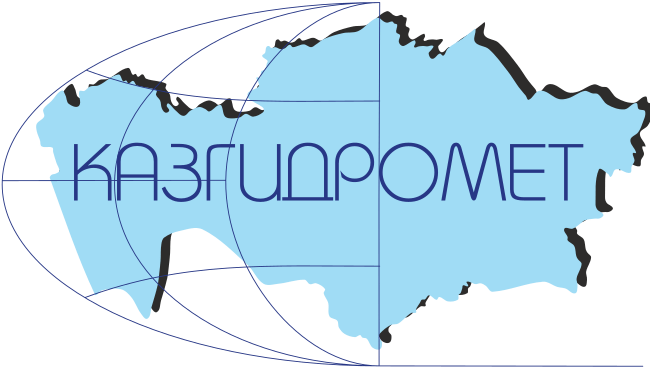ОСОБЕННОСТИ ТЕХНОЛОГИИ ВЫРАЩИВАНИЯ ЛУКА ПРИ КАПЕЛЬНОМ ОРОШЕНИИ В АРИДНОЙ ЗОНЕ ЮГА КАЗАХСТАНА
DOI:
https://doi.org/10.54668/2789-6323-2025-118-3-115-126Ключевые слова:
капельное орошение, выращивание лука, урожайность, водоотдачаАннотация
Технология выращивания лука в засушливой зоне Южного Казахстана должна учитывать специфические требования этой культуры к влажности почвы в течение всего вегетационного периода, учитывая основные фазы ее развития. Целью исследований было установление особенностей технологии выращивания лука репчатого в условиях капельного орошения с определением оптимального порога влажности для фаз развития растений и оценка его влияния на урожайность. Метод исследования - полевой опыт на специально отведенном опытном участке. Авторами установлено, что капельное орошение обеспечивает урожайность до 103.2 т/га при пороговом значении влажности почвы 85% НВ от всходов до начала формирования луковиц с дальнейшим снижением влажности почвы до уровня 75% НВ в фазу формирования - начало созревания луковиц и до минимального уровня влажности почвы в период вегетации. уровень HB до созревания луковиц должен составлять 70%. Данная технология рекомендована к применению в фермерских хозяйствах юга Казахстана для повышения продуктивности и качества продукции.
Библиографические ссылки
Annual Bulletin of Monitoring the State and Change of Climate in Kazakhstan: 2023. Ministry of Ecology, Geology and Natural Resources of the Republic of Kazakhstan. Republican State Enterprise "Kazhydromet", Research Center, Astana, 2024, p.: 90.
FAO. 2021. The State of the World's Land and Water Resources for Food and Agriculture (SOLAW 2021). The systems are on the limit. Summary report 2021, Rome: p. 77. Date views 02.07.2022 www.doi.org/10.4060/cb7654r.
Annual Report 2020-21 ICID. 2021. New Delhi (INDIA): International Commission on Irrigation and Drainage, рр: 82-86.
Kvan, Yu.R., Zharkov, V.A., Angold, E.V. 2014. Methods and technologies of watering in irrigated agriculture. Scientific researches in land reclamation and water economy: Collection of scientific works of LLP "KazSRIWE", Taraz, Vol. 51, Iss. 1, pр: 126-134.
Ortolá, M.P., Knox, J.W. 2015. Water relations and irrigation requirements of onion (Allium cepa L.): a review of yield and quality impacts. Experimental Agriculture, Vol. 51, Iss. 2, pp: 210 – 231.
Al-Jamal, M.S., Sammis, T.W., Ball, S.T., Smeal, D. 2000. Computing the crop water production function for onion. Agricultural Water Management, Vol. 46, Iss. 1, pp: 29-41.
Firissa, O., Seyoum, T., Abegaz, F. 2013. Effect of drip lateral spacing and mulching on yield, irrigation water use efficiency and net return of onion (Allium cepa L.) at Ambo, Western Shoa, Ethiopia. Journal of Horticulture pp: 63-69.
Vybornov, V.V., Zaitsev, V.A. 2021. onion drip irrigation. IOP Conf. Ser.: Earth Environ. Date Views 02.07.2022. URL: www.iopscience.iop.org/article/10.1088/1755-1315/843/1/012064/
Kalmykova, E.V., Petrov, N.Yu., Fomin, S.D., Kalmykova, O.V., Vorontsova, E.S., Koshkarova, T.S., Ileneva, S.V. 2020. Perspective agriculture cultivation of the bulb onion with drip irrigation. Bulgarian Journal of Agricultural Science, 26 (4): pp: 877–884.
Shock, C.C., Feibert, E.B.G., Saunders, L. 2005. Onion Response to Drip Irrigation Intensity and Emitter Flow Rate. HortTechnology, 15(3).
Enciso, J., Jifon, J., Anciso, J., Ribera, L. (2015). Productivity of Onions Using Subsurface Drip Irrigation versus Furrow Irrigation Systems with an Internet Based Irrigation Scheduling Program. International Journal of Agronomy, Vol. 2015, pр. 6.
How to water onions properly? Date Views 02.07.2022 (2022) www.ferma.expert/rasteniya/ovoshchi/luk/polivat/.
Zheng, J., Huang, G., Wang, J., Huang, Q., Pereira, L.S., Xu, Xu, Liu, H. (2012). Effects of water deficits on growth, yield and water productivity of drip-irrigated onion (Allium cepa L.) in an arid region of Northwest China. Irrigation Science, Vol. 31(5), pp. 995–1008.
Solovyeva, О.А. (2022). Onion cultivation technology under drip irrigation. News of the Nizhnevolzhsk Agricultural University Complex: Science and Higher Professional Education, 1(65), pp. 171-179.
Grigorov S.M., Vinnikov D.S. (2016). Bulb onion water consumption and ways of efficiency improvement of water resources utilization in drip irrigation. Scientific journal of the Russian Scientific Research Institute for Land Reclamation Problems, 3(23), pp. 19-35.
Balgabayev, N.N., Kalashnikov, A.A., Baizakova, A.E. (2016). Elaboration of Subsurface Irrigation Technique of Onions. Research Journal of Pharmaceutical, Biological and Chemical Sciences, 7(2), pp. 738-751.
Dingre, S.K., Pawar, D.D. (2020). Response of drip irrigated onion (Allium cepa L.) growth, yield and water productivity under deficit irrigation schedules. Journal of Natural Resource Conservation and Management, Vol. 1(1), pp. 69-75.
Shareef, T.M.El., Ma, Zh., Zhao, B. (2019). Essentials of Drip Irrigation System for Saving Water and Nutrients to Plant Roots: As a Guide for Growers. Journal of Water Resource and Protection, Vol.11(9), pp. 1129-1145.
Shock, C.C.; Feibert, E.B.G.;Pinto, J.M. (2013). Review of two decades of progress in the development of successful drip irrigation for onions. Irrigation Show & Education Conference.
Metwally, A.K. 2011. Effect of water supply on vegetative growth and yield of onion (Allium Cepa L.). Australian Journal of Basic and Applied Science, 5(12), pp: 3016-3023.
Meteorological database –URL: http://ecodata.kz:3838/dm_climat_ru/
Dospekhov, B.A. (1985). Methodology of field experience (with basics of statistical processing of research results). Moscow: Kolos, рр. 416.
Загрузки
Опубликован
Как цитировать
Выпуск
Раздел
Лицензия
Copyright (c) 2025 Вячеслав Жарков, Ермекгуль Жапаркулова, Айнур Бейсенкулова, Нурлан Балгабаев, Павел Калашников

Это произведение доступно по лицензии Creative Commons «Attribution-NonCommercial» («Атрибуция — Некоммерческое использование») 4.0 Всемирная.





